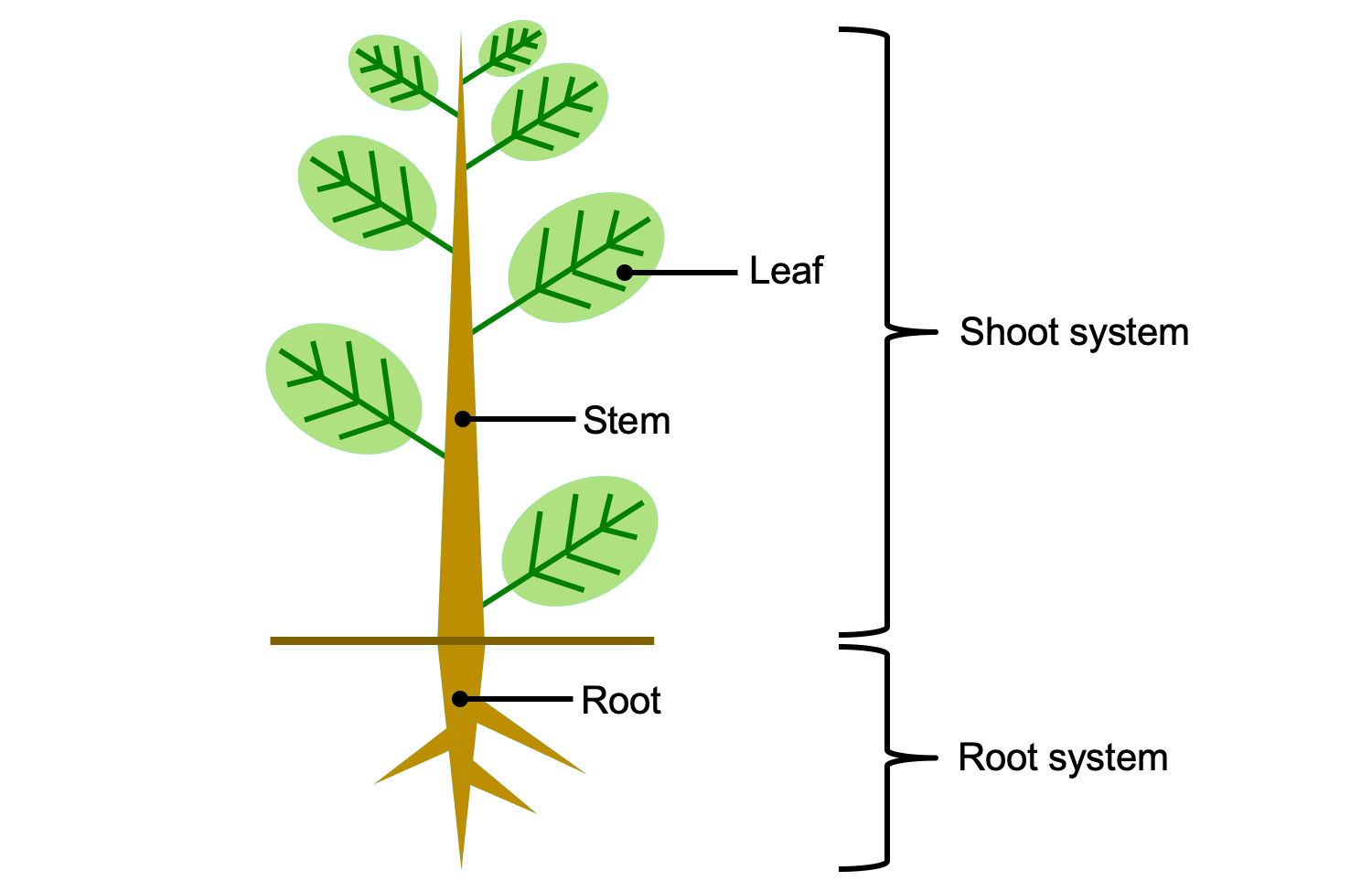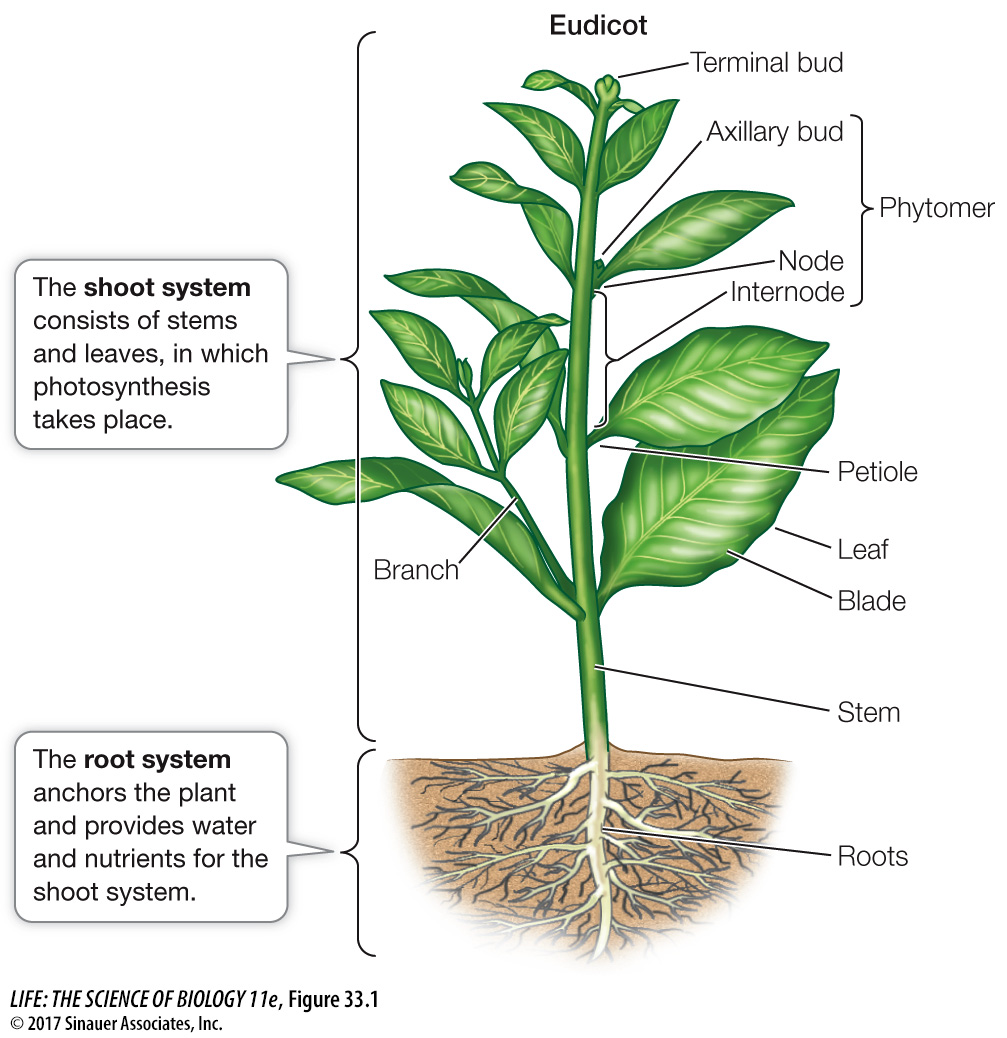“`markdown
# The Marvelous Machinery of plants: A Deep Dive into Plant Organs
Plants, the silent architects of our ecosystems, are complex organisms composed of specialized organs, each playing a crucial role in their survival and propagation. Understanding these organs – roots, stems, leaves, flowers, fruits, and seeds – is fundamental to appreciating the intricate dance of life in the plant kingdom.
Roots: Anchoring and Absorbing
Roots, typically subterranean structures, are the plant’s foundation, providing anchorage and absorbing water and essential minerals from the soil. Their diverse forms and functions reflect the varied environments plants inhabit.

Primary Roots and Lateral Roots
The primary root, originating from the germinating seed’s radicle, grows vertically downwards. Lateral roots, branching from the primary root, increase the root system’s surface area, maximizing absorption. In dicotyledonous plants, a prominent taproot system, consisting of a dominant primary root and smaller laterals, is common. In monocotyledons, fibrous root systems, with numerous adventitious roots of similar size, prevail.
Root Hairs: Microscopic Absorbers
Root hairs, tiny epidermal extensions near the root tips, dramatically amplify the root’s absorptive surface. These delicate structures facilitate the uptake of water and dissolved minerals, essential for plant growth and metabolism.

Specialized Roots: Adaptations for Survival
Plants have evolved specialized roots to thrive in diverse habitats. Aerial roots, found in epiphytes like orchids, absorb moisture and nutrients from the atmosphere. Storage roots, such as carrots and beets, accumulate carbohydrates for future use. Prop roots, like those of maize, provide additional support. Pneumatophores, in mangrove trees, facilitate gas exchange in oxygen-deficient soils. Mycorrhizal associations, symbiotic relationships between roots and fungi, enhance nutrient uptake, particularly phosphorus.
Stems: Support and Transport
Stems, the plant’s upright axis, provide structural support, elevating leaves, flowers, and fruits. They also serve as conduits, transporting water, minerals, and sugars throughout the plant.

Stem Structure: Vascular Bundles and Tissues
Stems comprise vascular tissues – xylem and phloem – embedded within ground tissues. Xylem conducts water and minerals upwards, while phloem transports sugars and other organic compounds downwards and upwards. Vascular bundles, containing both xylem and phloem, are arranged differently in monocots and dicots. In dicots, they form a ring, while in monocots, they are scattered.
Stem Growth: Apical and Lateral Meristems
Stem elongation occurs through the activity of the apical meristem at the stem tip. Lateral meristems, such as the vascular cambium and cork cambium, facilitate secondary growth, resulting in increased stem thickness. The vascular cambium produces secondary xylem (wood) and secondary phloem, while the cork cambium generates the protective periderm.
Specialized Stems: Adaptations for Diverse Functions
Rhizomes, horizontal underground stems, store food and enable vegetative propagation. Tubers, like potatoes, are swollen underground stems that store carbohydrates. Stolons, horizontal aboveground stems, facilitate vegetative spread. Cladodes, flattened photosynthetic stems, reduce water loss in arid environments. Thorns, modified stems, provide defense against herbivores.
Leaves: Photosynthetic Factories
Leaves, the primary photosynthetic organs, are responsible for capturing light energy and converting it into chemical energy in the form of sugars. Their structure is optimized for this vital function.
Leaf Structure: Lamina, Petiole, and Veins
A typical leaf consists of a flattened blade (lamina), a stalk (petiole) connecting the lamina to the stem, and veins containing vascular tissues. The lamina’s upper and lower surfaces are covered by the epidermis, a protective layer. Stomata, tiny pores in the epidermis, facilitate gas exchange.
Leaf Mesophyll: Photosynthetic Tissue
The mesophyll, the leaf’s interior tissue, contains chloroplasts, the sites of photosynthesis. The palisade mesophyll, located beneath the upper epidermis, is packed with chloroplasts and optimized for light absorption. The spongy mesophyll, beneath the palisade mesophyll, has air spaces that facilitate gas diffusion.
Leaf Venation: Patterns of Vascular Tissue
Leaf veins provide structural support and transport water and sugars. Venation patterns differ in monocots and dicots. Monocots typically have parallel venation, while dicots exhibit netted venation.
Specialized Leaves: Adaptations for Diverse Functions
Tendrils, modified leaves, enable climbing. Spines, modified leaves, provide defense. Bracts, modified leaves, surround and protect flowers. Storage leaves, like those of succulents, store water. Insectivorous leaves, like those of pitcher plants, trap and digest insects for nutrients.
Flowers: Reproductive Structures
Flowers, the reproductive organs of angiosperms (flowering plants), facilitate sexual reproduction, leading to the formation of seeds and fruits.
Flower Structure: Sepals, Petals, Stamens, and Pistils
A typical flower consists of four whorls of modified leaves: sepals, petals, stamens, and pistils. Sepals, the outermost whorl, protect the developing bud. Petals, often brightly colored, attract pollinators. Stamens, the male reproductive organs, produce pollen grains. Pistils, the female reproductive organs, contain the ovary, style, and stigma.
Pollination: Transfer of Pollen
Pollination, the transfer of pollen from an anther to a stigma, is essential for fertilization. Pollinators, such as insects, birds, and bats, play a crucial role in pollen transfer. Wind and water can also facilitate pollination.
Fertilization: Fusion of Gametes
Fertilization, the fusion of male and female gametes, occurs within the ovule, located inside the ovary. The fertilized ovule develops into a seed.
Fruits: Mature Ovaries
Fruits, mature ovaries containing seeds, protect and disperse seeds, ensuring the next generation of plants.
Fruit Development: From Flower to Fruit
After fertilization, the ovary wall develops into the fruit pericarp. The pericarp can be fleshy, as in berries and drupes, or dry, as in legumes and nuts.
Fruit Types: Diverse Forms and Functions
Fruits are classified based on their structure and development. Simple fruits develop from a single ovary. Aggregate fruits develop from multiple ovaries in a single flower. Multiple fruits develop from multiple flowers in an inflorescence.
Seed Dispersal: Spreading the Next Generation
Seed dispersal, the movement of seeds away from the parent plant, is essential for preventing overcrowding and colonizing new habitats. Wind, water, animals, and explosive mechanisms facilitate seed dispersal.
Seeds: Embryonic Plants
Seeds, the products of sexual reproduction, contain the embryonic plant, stored food reserves, and a protective coat.
Seed Structure: Embryo, Endosperm, and Seed Coat
The embryo consists of the plumule (embryonic shoot), radicle (embryonic root), and cotyledons (seed leaves). The endosperm, a nutritive tissue, provides food for the developing embryo. The seed coat, the outer layer, protects the seed from desiccation and damage.
Seed Germination: From Seed to Seedling
Seed germination, the process by which a seed develops into a seedling, requires favorable environmental conditions, such as adequate moisture, temperature, and oxygen. The radicle emerges first, followed by the plumule.
Seed Dormancy: A Period of Rest
Seed dormancy, a period of arrested growth, allows seeds to survive unfavorable conditions until conditions are suitable for germination. Dormancy can be broken by various factors, such as scarification, stratification, and light exposure.
In conclusion, plant organs, each with specialized structures and functions, work in harmony to ensure the survival and propagation of plants. From the anchoring roots to the photosynthetic leaves, the supportive stems to the reproductive flowers and fruits, and the embryonic seeds, these organs represent the remarkable adaptability and complexity of the plant kingdom. Understanding these intricate structures is essential for appreciating the vital role plants play in our ecosystems and the delicate balance of life on Earth.
“`
